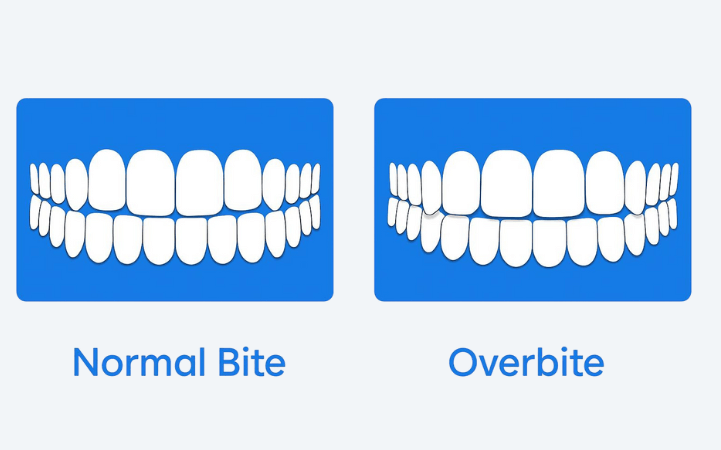
Ever found yourself asking, “Is my bite normal?” You’re not alone. At first, an overbite might seem like just a cosmetic concern, but it’s deeper than that. The fact that you are here, sums up that you might be wondering about the real differences when the debate is about an “overbite vs normal bite”. Well, here’s the thing, the way your teeth come together isn’t just about aesthetics. Moreover, anyone with this condition faces problems with their biting mechanics and speech articulation coupled with facial structural changes.
Undeniably, overbite cannot easily detect an overbite until it emerges. Furthermore, most people are unaware of their bite condition. So, let’s move forward and take a deeper look into this issue.
What Is a Normal Bite?
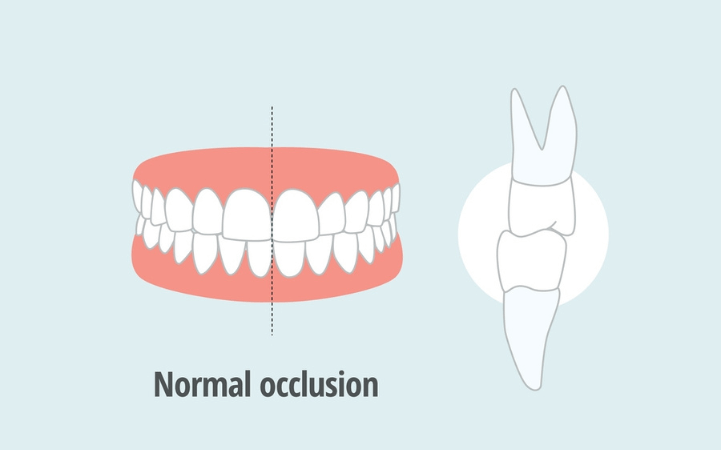
Before we get into the “overbite vs normal bite”, or some would say “normal teeth vs overbite debate”, let’s first get to know about the normal bite. Typically, a normal bite condition involves upper front teeth which overlap slightly beyond the lower teeth.
What Do Normal Teeth Look Like?
Moving forward, if you have normal teeth, your molars are likely to fit snugly together. Also, your jaw should move without any popping or discomfort. In short, everything works together smoothly.
Why Is Proper Bite Alignment Important?
Undeniably, proper alignment helps with chewing and reduces wear on teeth. Also, it prevents unnecessary jaw strain. However, if your biting mechanism is not perfectly aligned, it can cause severe headaches. Additionally, speech issues may also arise over time.
What Is an Overbite?
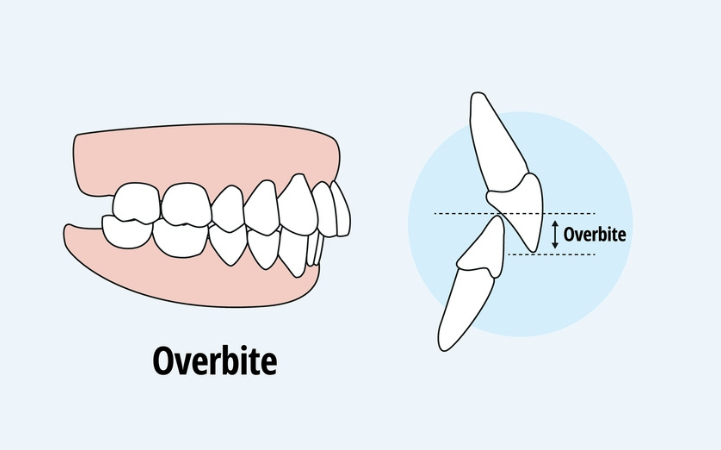
Now, to understand the context of overbite vs normal bite differences, it is significant that we first get to know about what overbite really is.
Overbite Definition
Medically speaking, an overbite exists when the upper front teeth completely or partially overlap the lower teeth while viewed from the front. However, different overbite cases exist from mild to moderate cases. Also, it may affect appearance, eating, or speaking.
Types of Overbite (Dental vs Skeletal)
Typically, a dental overbite is related to tooth placement. However, a skeletal overbite is related to jaw structure. Therefore, the early treatment approach depends on which type you have.
Signs You May Have an Overbite
Usually, signs can include jaw pain or difficulty chewing. Also, you might feel your teeth don’t close properly. On the other hand, worn enamel is another red flag.
Moving forward, now that we have separately overviewed key differences between normal bite vs overbite, it’s time to dig deeper into the differences between overbite vs normal bite.
Overbite vs Normal Bite – What’s the Difference?
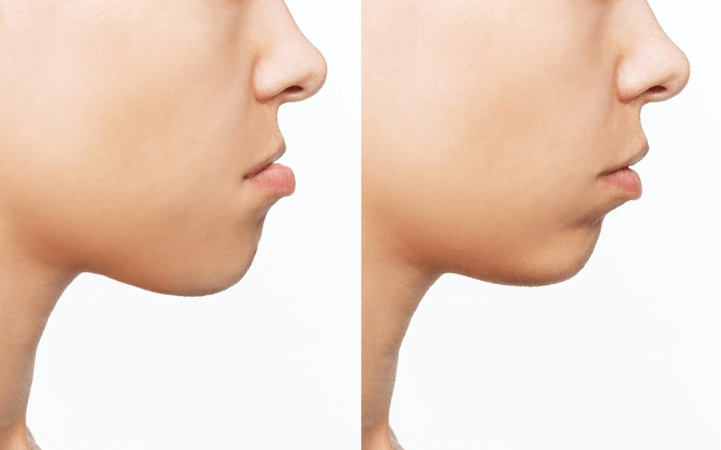
Here, we will take a more comprehensive peek into overbite vs normal bite differences.
Visual Comparison
Below, we have provided a picture to help you understand the differences when it comes to overbite vs normal bite:
Functional Differences
- Normally, a normal bite lets you chew evenly. Also, it helps with clear speech.
- On the other hand, an overbite may cause a lisp. In addition, it can change your face shape.
Health Implications
Moving forward, when it comes to overbite teeth vs normal teeth, health implications can vary too. Overbite can lead to gum damage. In contrast, normal teeth are less likely to wear down early.
Emotional and Social Impact
Usually, the appearance of an overbite makes individuals typically experience distress about their appearance when they interact with others. Moreover, such inner doubts and esteem problems drive them toward refusing to show their teeth by smiling naturally.
Now that we have viewed the key overbite vs normal bite differences, let’s have a look at the types of overbites and misalignments.
Types of Overbites and Misalignments
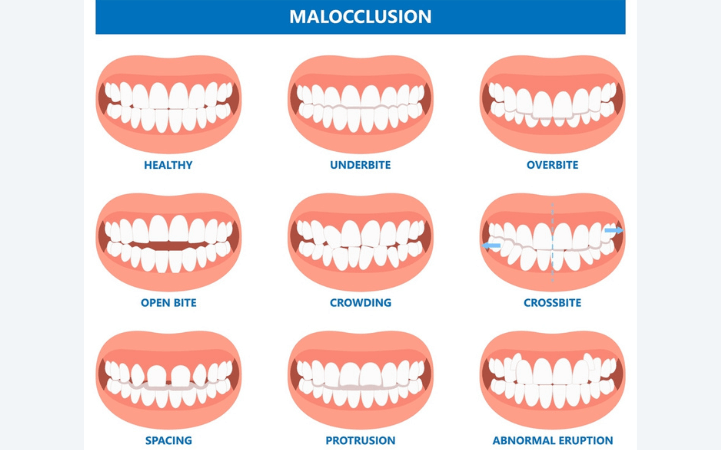
Moving forward, there are four main types of overbites:
Vertical Overbite:
The top front set of teeth extends far beyond the lower set vertically downward.
Horizontal Overbite:
The upper front teeth protrude beyond the lower teeth in an extensive forward position.
Skeletal Overbite:
Jawbone imbalance leads to this condition independently from tooth misalignment or position.
Dental Overbite:
Teeth that have either poor positioning or improper eruption patterns are responsible for this condition.
Also, each needs different treatment. Furthermore, not all overbites are easy to spot. However, proper diagnosis can help.
Overbite vs Overjet – Don’t Confuse the Two
Besides the classic overbite vs normal bite debate, there are other confusing issues like the differences between overbite and overjet. Furthermore, in simpler words, an overbite is about vertical overlap. In contrast, overjet is about horizontal protrusion. Also, both can affect speech and appearance.
What Causes an Overbite?
Below, you can see a few factors that can cause an overbite:
Genetic Factors
Usually, genes choose your jaw structure along with determining your chance to develop an overbite. Moreover, the combination of inherited jaw dimensions and inherited tooth shapes damages the odds of obtaining an overbite.
Childhood Habits
On the other hand, long-term habits like thumb sucking during childhood age may also affect bite shape and jaw mechanism. Also, excessive use of pacifiers can further impact jaw development negatively.
Jaw Growth Discrepancies
Lastly, a mismatch develops when a patient experiences uneven jaw growth. Fortunately, identifying these issues early allows the use of clear aligners to correct dental problems promptly.
Symptoms of a Misaligned Bite
Now, let’s take a look at the common symptoms of a typical misaligned bite:
Jaw Pain and TMJ
In overbite cases, jaw pain is common. Moreover, Turbo Mandibular Joint Disorder (TMJ) symptoms can appear if the joint is stressed.
Headaches and Earaches
Furthermore, poor alignment also causes pressure in the head. Moreover, this condition often causes earaches and migraines together with frequent headaches.
Speech Issues
On the other hand, unclear speech may also stem from overbite problems. Moreover, it can make pronunciation tricky as well.
Facial Asymmetry
Lastly, severe overbites may lead to facial structure imbalance. Ultimately, this can affect how your profile looks.
How to Fix an Overbite – Top 4 Options
Undeniably, discussing the core differences between overbite vs normal bite might have helped you grasp the necessary information about the issue at hand. Below you can explore a few effective solutions to address this issue.
Clear Aligners
First, users can choose clear aligners as their overbite treatment method since they provide virtually undetectable teeth straightening solutions. Moreover, during the treatment, clear aligners provide a soft force that moves your teeth gently toward their intended position.
Braces
In contrast, braces remain one of the most effective solutions for correcting overbites. Whether it’s a dental or skeletal issue, they can handle both with consistent results.
Orthodontic Headgear
Moving forward, the use of orthodontic headgear focuses primarily on child patients to help guide their jaw development throughout growth. Although effective it is rare to use orthodontic headgear for grown-up patients.
Surgical Options (For Severe Cases)
Medical procedures involving surgery become necessary for severe jaw structure issues. Typically, the treatment becomes an option only after braces or aligners demonstrate their inadequacy.
Overbite in Children vs Adults – What’s Different?
The age of a patient determines numerous aspects of overbite treatment including both the ease of treatment and its effectiveness.
Best Time for Treatment
The most optimal period to solve bite problems occurs in childhood. Braces along with headgear are more effective at repositioning a developing jaw during childhood since this stage presents an opportunity for moderate movement correction.
Challenges in Adult Treatment
The process of treatment becomes more demanding for adult patients. Furthermore, the mature state of the bones requires longer treatment durations which sometimes necessitates surgical intervention for patients to obtain stable outcomes.
Do You Have an Overbite or Normal Bite? Take the Self-Check Quiz

- Does your top row of teeth cover most of the bottom ones?
- Do you experience jaw pain or clicking sounds?
- Is it hard to chew or speak clearly?
- Does your chin look slightly set back?
If you answered “yes” to two or more of these questions, it could be more than just a minor issue. Fortunately, a brief appointment with your dentist will identify the actual issue at hand.
When Should You See a Dentist About Overbite?
You should make an appointment with a dentist when you sense uneven jaw placement. Jaw pain and issues with speech are two possible indicators of misalignment that you should verify.
Can an Overbite Be Prevented?
Undeniably, the prevention of overbite requires immediate attention to dental care during childhood. Additionally, understanding the differences between an overbite vs normal bite is crucial for identifying potential risks early.
Tips for Children’s Dental Development
Moving forward, early detection of bite problems depends on continuous dental office check-ups in the future. Furthermore, adults should discourage thumb-sucking after a child becomes two years old because it may interrupt dental growth.
Monitoring Early Signs
You must notice both irregular tooth alignment and difficulties with food chewing during routine and casual observation time. Moreover, the early application of braces provides multiple benefits which protect teeth from becoming worse as the patient grows older.
Overbite vs Normal Bite – Final Thoughts
So, when it comes to overbite vs normal, the difference goes beyond just appearance. Undeniably, proper bite alignment affects your overall health. Without a doubt, it can improve how you feel daily. Sure, fixing it might take time. But to be honest, it’s worth it.
Moreover, knowing both signs and treatment solutions for this condition is the essential first step toward getting better. At FirstClass Aligners, we offer retainers and clear aligners to help you make the right decision for your bite.
So, whether you’re comparing overbite vs normal or just trying to better understand the two, the key lies in staying aware. Contact us today for a brighter smile!
Frequently Asked Questions
How much overbite is considered normal?
Typically, an overbite that exists within normal parameters measures between 2 – 4 millimetres.
Can you live with an untreated overbite?
Yes, people can survive with untreated overbites, although additional health problems with jaw discomfort and oral complications develop progressively.
How do I know if I have a normal bite or overbite?
Look for excessive top tooth coverage of the lower teeth to check the condition.
Is a slight overbite okay?
Yes, a slight overbite is generally okay and doesn’t typically cause major issues.
Does an overbite get worse with age?
Lastly, the duration of an untreated overbite may aggravate to an increased extent as natural tooth deterioration occurs together with changes in jaw structure and teeth grinding habits.







